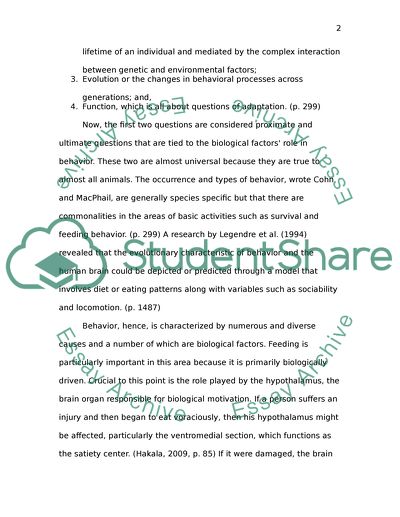Cite this document
(“Biological Factors and Feeding Behaviors Essay Example | Topics and Well Written Essays - 1500 words”, n.d.)
Biological Factors and Feeding Behaviors Essay Example | Topics and Well Written Essays - 1500 words. Retrieved from https://studentshare.org/biology/1443389-to-answer-one-of-following-questions
Biological Factors and Feeding Behaviors Essay Example | Topics and Well Written Essays - 1500 words. Retrieved from https://studentshare.org/biology/1443389-to-answer-one-of-following-questions
(Biological Factors and Feeding Behaviors Essay Example | Topics and Well Written Essays - 1500 Words)
Biological Factors and Feeding Behaviors Essay Example | Topics and Well Written Essays - 1500 Words. https://studentshare.org/biology/1443389-to-answer-one-of-following-questions.
Biological Factors and Feeding Behaviors Essay Example | Topics and Well Written Essays - 1500 Words. https://studentshare.org/biology/1443389-to-answer-one-of-following-questions.
“Biological Factors and Feeding Behaviors Essay Example | Topics and Well Written Essays - 1500 Words”, n.d. https://studentshare.org/biology/1443389-to-answer-one-of-following-questions.


